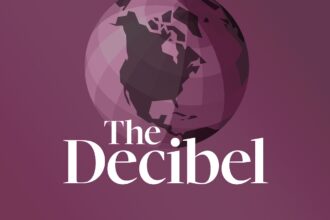In an unprecedented move to connect Canadians with their natural heritage, the federal government has launched the Canada Strong Pass initiative, offering free access to national parks, historic sites, and marine conservation areas throughout 2024. This ambitious program arrives as Parks Canada celebrates its 113th anniversary, creating unprecedented opportunities for citizens to explore the country’s most treasured landscapes without financial barriers.
The initiative emerged from growing concerns about accessibility to Canada’s protected spaces, particularly as inflation and economic pressures have limited recreational options for many families. Environment Minister Steven Guilbeault, speaking at the program’s launch in Banff National Park, emphasized the dual purpose behind the program.
“The Canada Strong Pass represents our commitment to ensuring every Canadian, regardless of economic circumstance, can experience the profound connection to this land that shapes our national identity,” Guilbeault stated. “These spaces belong to all Canadians, and removing entrance fees is a meaningful step toward genuine accessibility.”
The program offers comprehensive access to 171 nationally protected areas, including 47 national parks, 97 historic sites, and 5 marine conservation areas. Normally, daily entry fees range from $8 to $21 per adult depending on the location, with an annual Discovery Pass costing approximately $74—costs that can quickly accumulate for families or frequent visitors.
Early reception has been overwhelmingly positive, with Parks Canada’s reservation system experiencing unprecedented traffic since the announcement. According to preliminary data, reservation requests have increased by 67% compared to the same period last year, with particularly strong interest in iconic destinations like Banff, Jasper, and Prince Edward Island National Park.
The economic benefits extend beyond individual savings. Tourism stakeholders in communities adjacent to national parks anticipate significant economic stimulus. A study by the Tourism Industry Association of Canada suggests the initiative could generate up to $400 million in additional tourism revenue as visitors extend their stays and increase spending on accommodations, dining, and local experiences.
Environmental organizations have expressed measured support, praising increased access while cautioning about potential impacts of higher visitation. “We fully support connecting more Canadians with nature,” said Jennifer McKay of the Canadian Wilderness Foundation. “However, we’re advocating for complementary investments in trail maintenance, waste management, and visitor education to ensure these precious ecosystems remain protected.”
The program aligns with broader government strategies to strengthen national unity through shared experiences of Canada’s natural and cultural heritage. Internal government documents obtained through access to information requests indicate the initiative is part of a larger effort to build post-pandemic social cohesion through collective appreciation of Canada’s protected spaces.
International observers have taken note as well. The United Nations Environment Programme recently highlighted the Canada Strong Pass as a model approach for promoting conservation awareness and environmental stewardship through accessible public engagement.
Indigenous communities have participated in program development, with many First Nations partnering with Parks Canada to enhance cultural interpretation programs. “This initiative creates opportunities to share our traditional knowledge and connection to these lands,” explained Elder Thomas Bearfoot, who advises on interpretive programming at Point Pelee National Park.
Critics, primarily from opposition benches, have questioned the fiscal implications, citing concerns about lost revenue and potential strain on park infrastructure. Conservative environment critic Michael Barrett has called for transparency regarding how the estimated $60 million in foregone entrance fees will be offset in Parks Canada’s operational budget.
Parks Canada officials have responded by highlighting research suggesting increased visitation typically leads to greater political support for conservation funding, potentially strengthening long-term financial sustainability for the parks system.
As Canadians begin planning their explorations under this new program, the question remains: will this temporary initiative fundamentally transform how we value and interact with our natural heritage, or will it be remembered as a fleeting moment of accessibility in our relationship with these cherished landscapes?










